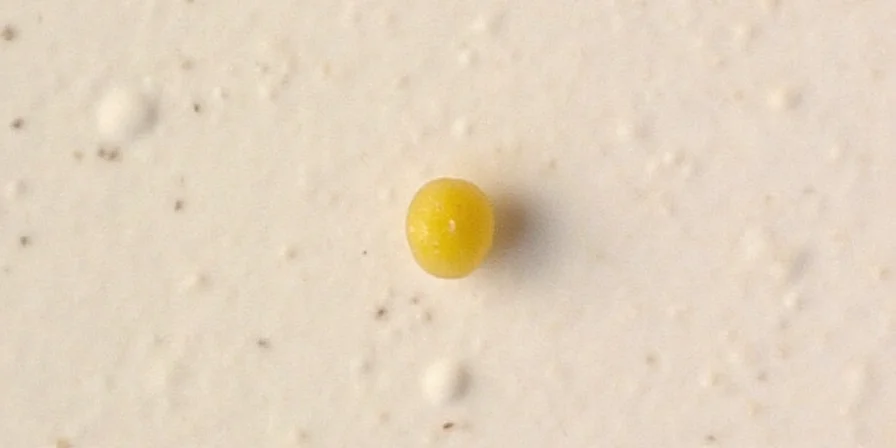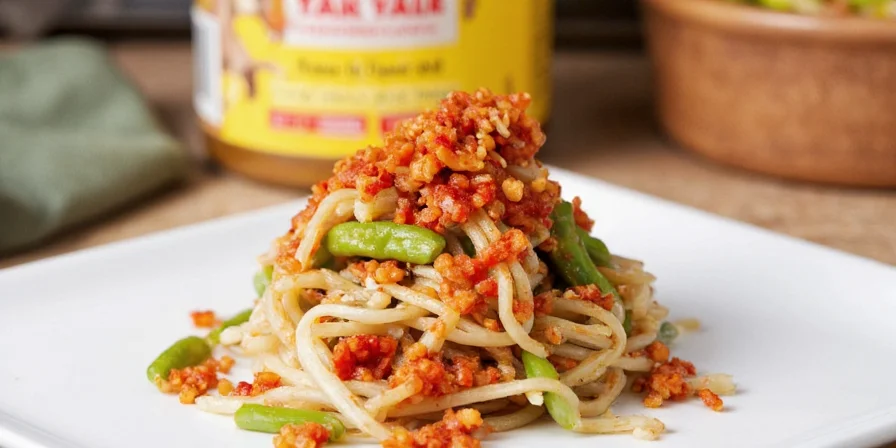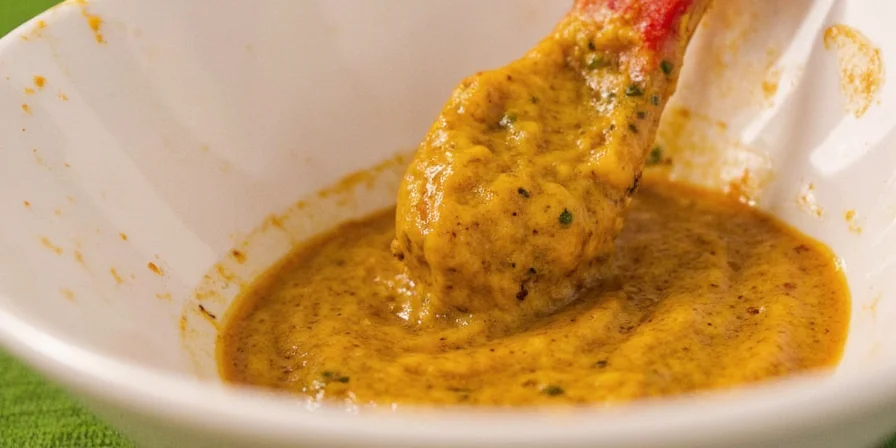What Is Hot Oriental Mustard and Why It's Essential for Authentic Asian Cooking
Hot oriental mustard isn't just another condiment—it's the secret weapon that transforms good Asian dishes into restaurant-quality meals. Unlike the mild yellow mustard you're familiar with, authentic hot oriental mustard delivers an intense, sinus-clearing heat that develops gradually and enhances rather than overwhelms your dishes. This guide reveals exactly how to use it properly, why it's different from regular mustard, and the precise techniques top chefs use to control its powerful flavor.
Immediate Answers to Your Most Pressing Questions
"What makes hot oriental mustard so much hotter than regular mustard?" It contains 3-5x more sinigrin (the compound that creates heat) than Western yellow mustard. "Can I substitute it in recipes?" Yes, but use only 1/3 the amount of regular mustard due to its intense potency. "Why does mine lose heat so quickly?" The enzymatic reaction that creates the heat continues until the compounds degrade—fresh preparation is key.
Table of Contents
- Hot Oriental Mustard: Definition and What Makes It Different
- Why It Creates That Unique Nasal Heat (Simple Science)
- 7 Must-Know Uses for Home Cooks
- Mustard Comparison: Which Type to Use When
- Heat Control: Make It Milder or More Intense on Demand
Hot Oriental Mustard: Definition and What Makes It Different
Real hot oriental mustard comes from brown mustard seeds (Brassica juncea), not the yellow seeds used in American-style mustard. This difference creates a dramatically more intense experience—think wasabi-level heat that hits your sinuses rather than your tongue. When properly prepared, it delivers that authentic restaurant flavor you can't replicate with store-bought alternatives.
The key difference isn't just heat level—it's how the heat develops. Western mustard provides immediate, constant heat. Authentic hot oriental mustard peaks 5-10 minutes after mixing, then gradually fades. This "heat curve" is why professional chefs time its addition precisely during cooking for maximum impact.

Why It Creates That Unique Nasal Heat (Simple Science)
You don't need a chemistry degree to master hot oriental mustard—just understand these 3 practical principles:
- Water temperature controls intensity: Cold water (60-70°F) creates balanced heat; hot water destroys the enzymes. Never use boiling water!
- Timing is everything: Wait 8 minutes after mixing for maximum heat, or use immediately for milder results
- Vinegar stops the reaction: Add it early for mild mustard, late for intense heat
These simple techniques give you complete control. Want restaurant-style heat for dumpling sauce? Mix with cool water and wait 8 minutes. Making a delicate fish dish? Mix with vinegar immediately to tame the intensity. This level of precision is why hot oriental mustard belongs in every serious cook's toolkit.
7 Must-Know Uses for Home Cooks
- Dumpling dipping sauce: Mix 1 part mustard + 2 parts black vinegar + 1 tsp chili oil (wait 8 minutes before serving)
- Meat tenderizer: Add 1 tsp to marinades—breaks down proteins without acidity of citrus
- Wok enhancement: Stir in 1/2 tsp during last 30 seconds of stir-frying for authentic "wok hei" flavor
- Vegetable booster: Toss 1 tsp with roasted bok choy or broccoli for instant flavor upgrade
- Fish sauce alternative: Mix with soy sauce for seafood dishes where chili would overpower
- Broth enhancer: Whisk 1/2 tsp into hot soup just before serving for aromatic complexity
- Barbecue secret: Blend with hoisin (1:4 ratio) for Asian-style ribs that won't clash with other flavors
Mustard Comparison: Which Type to Use When
Save yourself from recipe fails—use this quick reference to select the right mustard:
| Type | When to Use It | Substitution Ratio | Heat Duration | Best For |
|---|---|---|---|---|
| Yellow Mustard | Hot dogs, sandwiches | 1:1 | Constant | Western dishes only |
| Brown Mustard (Oriental) | Asian recipes calling for "hot mustard" | 1:3 vs yellow mustard | 5-15 min peak | Dipping sauces, marinades |
| Black Mustard | Indian cuisine | Not substitutable | Very short | Pickles, robust meats |
| Wasabi | Sushi/sashimi | 1:1.5 vs mustard | 2-3 min | Raw fish dishes |
| Horseradish | Cocktails, roast beef | 1:2 vs mustard | 5-8 min | Meat dishes, cocktails |
Heat Control: Make It Milder or More Intense on Demand
Stop guessing—master these 3 foolproof techniques used by professional chefs:
- For maximum heat: Mix powder with cool water (65°F), wait 8 minutes, then add to dish. Perfect for dumpling sauce
- For mild heat: Mix powder with vinegar first, then add water. Ideal for delicate fish
- For shelf-stable convenience: Mix with 1 tsp Shaoxing wine before refrigerating—extends potency by 48 hours
Pro tip: Always prepare small batches. Hot oriental mustard loses 30% potency within 24 hours, even when refrigerated. For critical dishes, make it fresh—properly prepared, it takes less than 2 minutes.

Putting It All Together: Your Action Plan
Start using hot oriental mustard like a pro with these simple steps:
- Buy authentic powder: Look for "brown mustard powder" or "Brassica juncea"—avoid pre-made pastes with additives
- Master the basic mix: 1 tsp powder + 1 tsp cool water, wait 8 minutes for dipping sauce
- Try one application: Start with dumpling sauce (1 part mustard + 2 parts black vinegar)
Within one meal, you'll understand why authentic hot oriental mustard is the secret behind your favorite restaurant's depth of flavor. It's not just about heat—it's about unlocking authentic Asian taste profiles that transform ordinary home cooking into extraordinary meals.
How much hot oriental mustard should I use compared to regular mustard?
Use only one-third the amount of hot oriental mustard compared to regular yellow mustard. For example, if a recipe calls for 1 tablespoon of yellow mustard, use just 1 teaspoon of hot oriental mustard. Its sinigrin content is 3-5x higher, making it dramatically more potent.
Why does water temperature matter so much when preparing hot mustard?
Water temperature directly controls the enzymatic reaction that creates heat. Water above 120°F destroys the myrosinase enzyme, resulting in weak flavor. Cool water (60-70°F) allows optimal reaction for balanced heat. Professional chefs use a thermometer to hit exactly 65°F for perfect dipping sauce every time.
Can I use horseradish as a substitute for hot oriental mustard?
Not effectively. While both create nasal heat, they're chemically different with distinct flavor profiles. Horseradish has an allium-based heat that works well with meats but clashes with traditional Asian flavors. For authentic Chinese or Korean dishes, nothing replicates the earthy, complex heat of proper hot oriental mustard. Use the substitution ratios in our comparison table instead.
How can I fix mustard that's too hot?
Unlike chili heat, mustard's pungency naturally fades within 15 minutes. For immediate relief, mix in equal parts honey or dairy (milk works better than yogurt). Better yet, prevent the problem: always mix small batches and wait 8 minutes to assess heat level before adding to your dish. Remember—1/2 teaspoon goes a long way!
Where can I buy authentic hot oriental mustard powder?
Look for "brown mustard powder" or "Brassica juncea" in Asian grocery stores (check the spice aisle, not the condiment section). Avoid pre-made pastes with additives like MSG or artificial colors. Online, search for "hot Sichuan mustard powder" or "dry mustard for Chinese cooking"—reputable brands include Lee Kum Kee and Sun Luck. Store in an airtight container away from light for best results.











 浙公网安备
33010002000092号
浙公网安备
33010002000092号 浙B2-20120091-4
浙B2-20120091-4